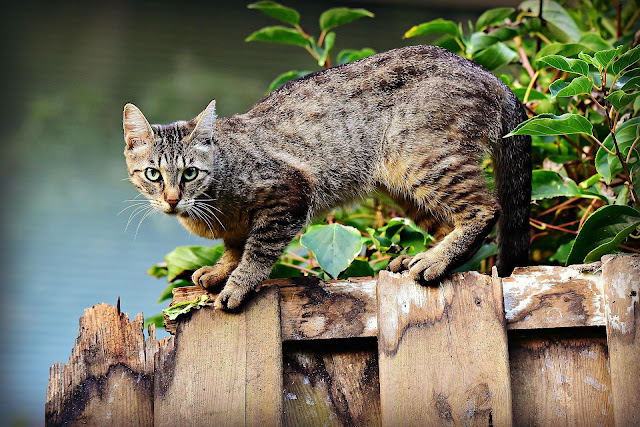Are you looking for a fun and engaging way to keep your indoor pets entertained? Look no further than the Cyahvtl Laser Pointer! This innovative toy uses a red dot LED light to create an interactive and stimulating playtime experience for cats and dogs alike. With five switchable patterns and easy USB charging, the Cyahvtl Laser Pointer is the perfect addition to any pet owner's arsenal.
Introduction: The Benefits of Interactive Playtime for Indoor Pets
As any pet owner knows, keeping indoor pets entertained and engaged can be a challenge. Without access to the great outdoors, cats and dogs may become bored, anxious, or even destructive. That's why it's essential to provide them with stimulating and interactive toys that can help alleviate these issues. In this article, we'll explore the many benefits of interactive playtime for indoor pets and how the Cyahvtl Laser Pointer can help.
The Cyahvtl Laser Pointer: Features and Benefits
1. Red Dot LED Light Pointer
The Cyahvtl Laser Pointer uses a red dot LED light pointer to create a fun and engaging playtime experience for cats and dogs. This type of light is safe for pets and won't cause any harm to their eyes.
2. Five Switchable Patterns
With five switchable patterns, the Cyahvtl Laser Pointer offers a variety of playtime options for pets. From a classic red dot to more complex patterns, this toy is sure to keep your pets entertained and engaged for hours.
3. USB Charging
The Cyahvtl Laser Pointer is easy to recharge using a USB port, making it a convenient and eco-friendly option for pet owners. No need to worry about replacing batteries or running out of power in the middle of playtime.
4. Durable Design
Made with high-quality materials, the Cyahvtl Laser Pointer is built to last. Its durable design can withstand even the most enthusiastic playtime, ensuring that it will be a beloved toy for years to come.
How the Cyahvtl Laser Pointer Can Benefit Your Pets
1. Provides Exercise
Interactive playtime with the Cyahvtl Laser Pointer can help your pets get the exercise they need to stay healthy and happy. Chasing the red dot or patterns around the room can help improve their coordination, agility, and overall fitness.
2. Reduces Boredom and Anxiety
Indoor pets can often become bored or anxious without access to outdoor stimuli. The Cyahvtl Laser Pointer provides an engaging and exciting playtime experience that can help alleviate these feelings and provide mental stimulation for your pets.
3. Strengthens Bonding
Playing with your pets using the Cyahvtl Laser Pointer can help strengthen your bond and improve your relationship. It provides an opportunity for shared playtime and bonding that can help build trust and affection between you and your furry friends.
How to Use the Cyahvtl Laser Pointer Safely
While the Cyahvtl Laser Pointer is a safe and enjoyable toy for pets, it's essential to use it responsibly. Here are some tips for using the toy safely:
- Never shine the laser directly into your pet's eyes.
- Avoid shining the laser on reflective surfaces that could cause eye damage.
- Use the toy in a safe and enclosed space to prevent accidents or injuries.
Conclusion: Why the Cyahvtl Laser Pointer is a Must-Have for Pet Owners
In conclusion, the Cyahvtl Laser Pointer is an essential addition to any pet owner's collection of toys. This innovative toy provides a fun and engaging playtime experience for indoor cats and dogs, helping to alleviate boredom and anxiety while promoting exercise and mental stimulation. Its durable design, USB charging, and five switchable patterns make it a convenient and long-lasting option for pet owners. Remember to use the Cyahvtl Laser Pointer responsibly, and always prioritize your pet's safety. With the Cyahvtl Laser Pointer, you and your pets can enjoy hours of shared playtime and bonding. Don't hesitate to add this must-have toy to your pet's collection today!
FAQs:
Is the Cyahvtl Laser Pointer safe for my pets?
- Yes, the Cyahvtl Laser Pointer is designed to be safe for pets when used responsibly. However, avoid shining the laser directly into your pet's eyes and use the toy in a safe and enclosed space to prevent accidents or injuries.
- How do I charge the Cyahvtl Laser Pointer?
- The Cyahvtl Laser Pointer is easy to recharge using a USB port. Simply plug it in and let it charge for a few hours before use.
Can I use the Cyahvtl Laser Pointer outdoors?
- It's best to use the Cyahvtl Laser Pointer indoors, as outdoor use can be dangerous for pets. Bright sunlight can make it difficult for pets to see the laser, and it's also important to avoid shining the laser on reflective surfaces that could cause eye damage.
What types of patterns does the Cyahvtl Laser Pointer offer?
- The Cyahvtl Laser Pointer offers five switchable patterns, ranging from a classic red dot to more complex patterns that can provide added stimulation for your pets.
How can interactive playtime with the Cyahvtl Laser Pointer benefit my pets?
- Interactive playtime with the Cyahvtl Laser Pointer can provide exercise, mental stimulation, and bonding opportunities for your pets. It can also help alleviate boredom and anxiety in indoor pets.







.png)

.png)
.png)
.png)












